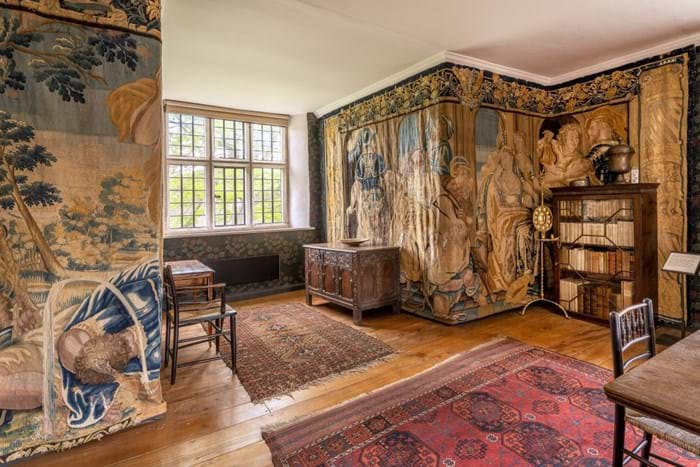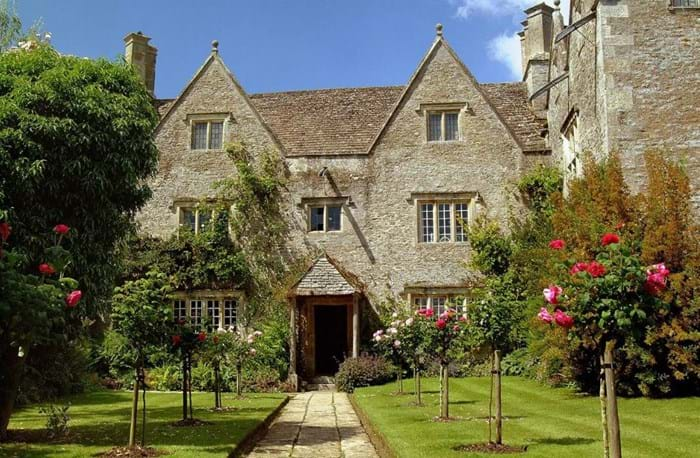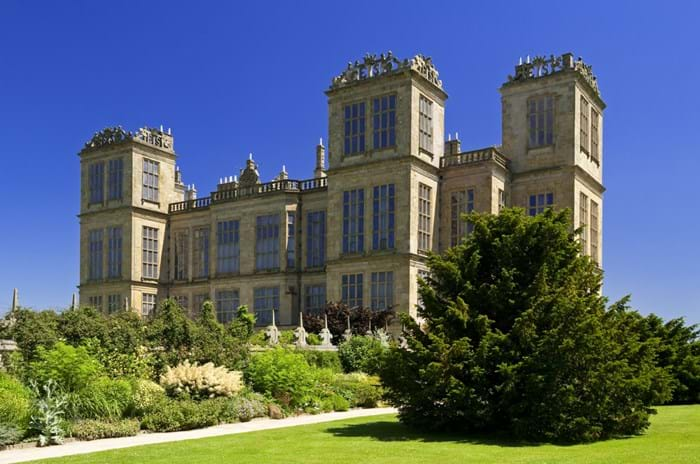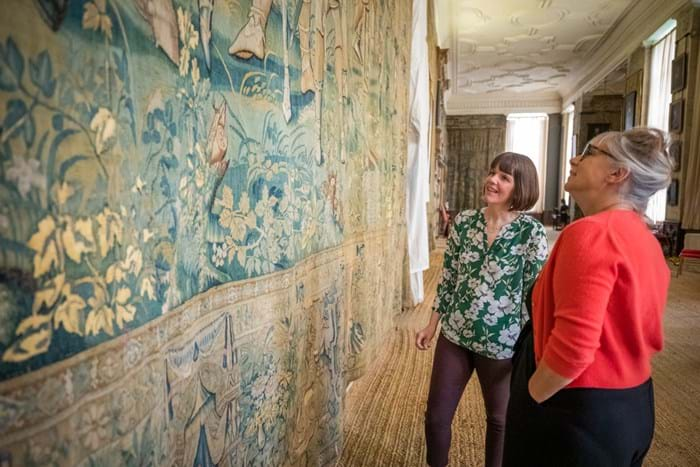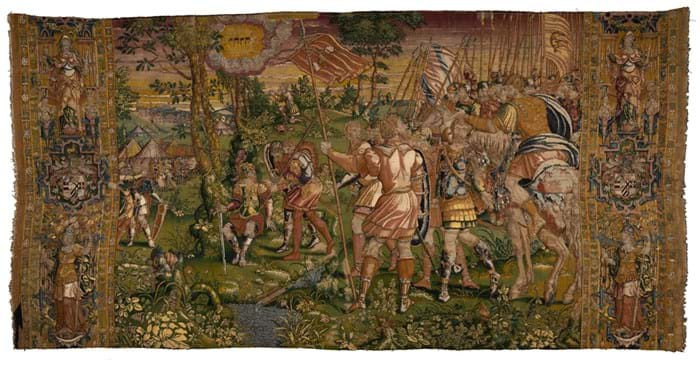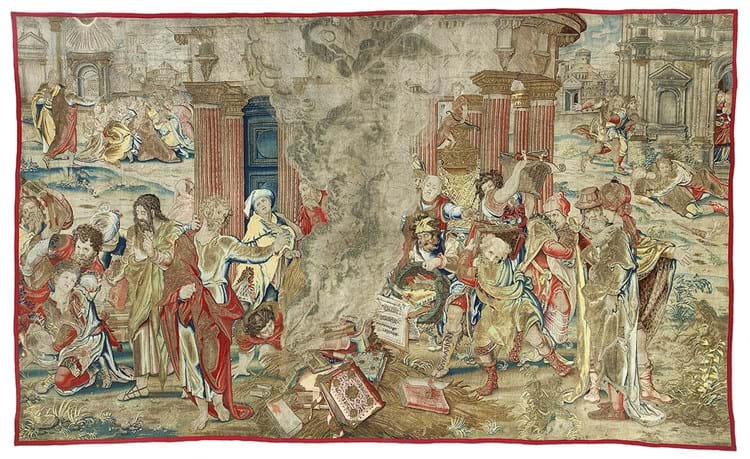
The tapestry commissioned by Henry VIII for Hampton Court depicts a bonfire on which St Paul directs the burning of irreligious books.
The Society of Antiquaries is embarking on a campaign to conserve Kelmscott Manor’s Samson Tapestries and a separate fundraising project in County Durham aims to secure a work commissioned by Henry VIII that is currently owned by a vendor in Spain.
Meanwhile, the National Trust’s Hardwick Hall has just unveiled its set of thirteen 16th century tapestries which have just completed a 24-year-long £1.7m conservation project.
The Auckland Project
A previously lost tapestry commissioned by Henry VIII for Hampton Court during the turmoil of the English Reformation is a step closer to returning to the UK for public display.
The monumental tapestry - nearly 20ft (6.1m) wide - depicts a bonfire on which St Paul directs the burning of irreligious books (pictured, top).
Designed by Pieter Coecke van Aelst, it is the only known survivor from a set of nine woven compositions emblematic of the Act of Supremacy.
It is thought to have remained in England until the late 1960s, when it was acquired by a dealer in Barcelona, and remains in a private collection in Spain. Tapestry specialist S Franses exhibited the work in London in 2018 before it embarked on a global tour. It is currently in the US.
Export ban
The tapestry is subject to an export ban preventing it from being bought by an owner outside Spain. However, Spain’s Ministry of Culture has agreed that if a suitable UK institution with a link to its history can pay the £4.5m price tag, it will allow the tapestry to return to Britain.
Billionaire investor and philanthropist Jonathan Ruffer is behind the plan to buy it.
He has been supporting the regeneration of the town of Bishop Auckland and purchased Auckland Castle to save a collection of paintings by Zuburan. If successful, his planned Faith Museum at the castle will display the tapestry.
A fundraising campaign has been launched which has the backing of Archbishop Justin Welby and the Bishop of Durham, the Rt Rev Paul Butler. Funding of £3.5m is sought from the National Heritage Memorial Fund alongside a public donation target of £1m via justgiving.com/campaign/tapestry
Kelmscott Manor's Samson tapestries
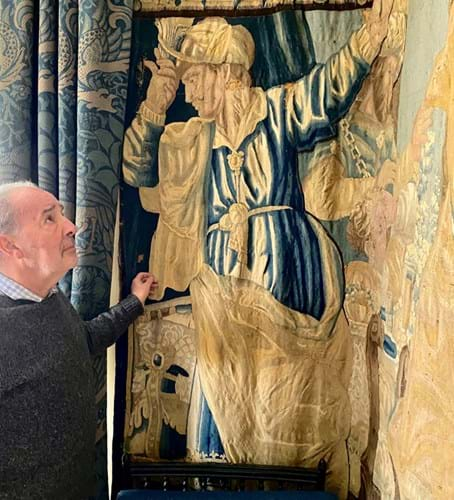
Martin Levy of dealership H Blairman & Sons and chairman of the Kelmscott Campaign Group with one of the Samson tapestries.
The Society of Antiquaries is embarking on a campaign to conserve Kelmscott Manor’s Samson tapestries.
The Grade I-listed 16th and 17th century house in the village of Kelmscott, Oxfordshire, is the former country home of William Morris and his family. It is now owned by the Society of Antiquaries of London.
The latest funding project is to conserve the Samson tapestries and return its Tapestry Room to the way it looked during Morris’ lifetime.
The four 17th-century Dutch tapestries depicting the Life of Samson are a rare survival of what was in the house prior to Morris arriving. Originally a bedroom, the Tapestry Room was used by him as both a workspace and sitting room.
The Society of Antiquaries plans to return the room to what it looked like when Frederick Evans photographed the interiors of Kelmscott Manor in 1896. (Morris and Dante Gabriel Rossetti took on the joint tenancy of Kelmscott Manor in 1871.)
The society needed £300,000 to conserve the tapestries in sequence and re-hang them configured as they were during Morris’ time. A third of this has already been raised.
Martin Levy of dealership H Blairman & Sons, who is chairman of the Kelmscott Campaign Group, said: “The importance of returning the Tapestry Room to its original state cannot be overstated. William Morris used the room as his principal workspace as did, later, his daughter May. We hope that you will support our campaign.”
As part of the project there is an exhibition of Morris-era tapestries on loan from Lord Lloyd-Webber.
The Holy Grail tapestries were designed by Morris with his close friend and associate Pre-Raphaelite artist Edward Burne-Jones to illustrate the quest for the Holy Grail by the Knights of the Round Table in 1890. When ascending the manor’s staircase, visitors will be flanked by three of King Arthur’s knights: Sir Gawaine, Sir Lancelot and Sir Uwain.
Kelmscott hopes the loan of these tapestries will "encourage more visitors to Kelmscott Manor and support our fundraising efforts".
Donations can be made online or there is also the opportunity to become a benefactor (for £5000) while a gift of £500 (which can be split into smaller monthly donations) makes the donor a companion of Kelmscott Manor.
For more on the appeal visit The Society of Antiquaries.
The Gideon tapestries at Hardwick Hall
The National Trust has just unveiled the final tapestry in a set of 13 that have been conserved over the past 24 years.
The 16th century Gideon tapestries in the Long Gallery at Hardwick Hall in Derbyshire were taken down for conservation treatment in 1999. Now the final monumental tapestry has returned to the hall following the £1.7m project.
At nearly six metres high and totalling over 70 metres in length (20ft x 230ft), the Gideon tapestries are the largest surviving set in the UK and were bought by Bess of Hardwick, a friend of Elizabeth I, in 1592.
They tell the story of Gideon, one of the 12 judges to appear in the Old Testament Book of Judges, who leads an army to save his people from the Midianites. The last to be conserved depicts Gideon Entering the Midianite camp as a Spy.
They were woven c.1578 in the Flemish region of Oudenaarde for the Lord Chancellor Sir Christopher Hatton, for the Long Gallery at Holdenby House in Northamptonshire.
After Hatton’s death, the tapestries were sold to Bess of Hardwick for the then huge sum of £326 15s 9d. She covered Sir Christopher’s coat of arms, which had been woven into the tapestries, with her own, made from painted wool.
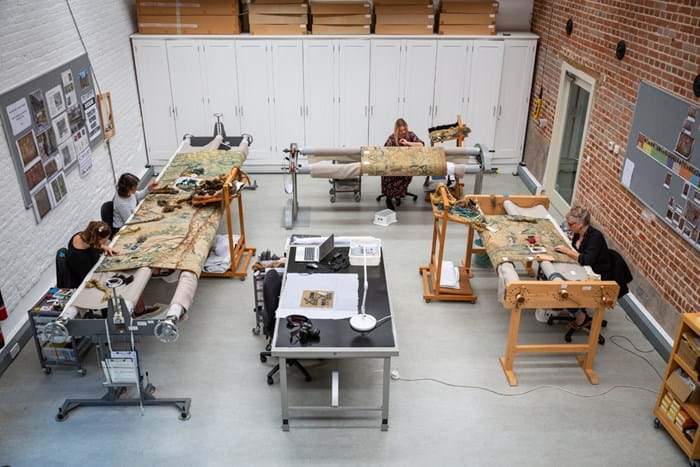
The National Trust studio with stitch treatment being carried by conservators Elaine Owers, Yoko Hanegreefs, Aimee Grice-Venour and Rachel Langley. Image: National Trust James Dobson.
The conservation of each Gideon tapestry has taken over two years to complete. Like the 12 tapestries before it, the 13th was thoroughly vacuum cleaned to remove loose fibres, soiling, dust and soot and then documented in detail before being sent to Belgium for specialist wet cleaning.
National Trust conservators used specialist conservation stitching – with hand-dyed yarns – to repair damaged areas, improve the appearance of 20th-century reweaves, and strengthen the structure of the tapestry. Its three sections were then reconstructed and lined to prevent dust penetrating the back. In total the conservation stitching, lining and reconstruction took 5470 hours to complete.
Elaine Owers, textile conservator, who worked on all five tapestries that cover the main wall of the Long Gallery, said: "I started working on the project as a tapestry conservation intern in 2008, progressing to project manage some of the larger tapestries.
"It is the largest tapestry conservation project ever undertaken by the National Trust and everyone at the studio has been involved at some point. There is a real sense of pride as we see the final tapestry hung in position."
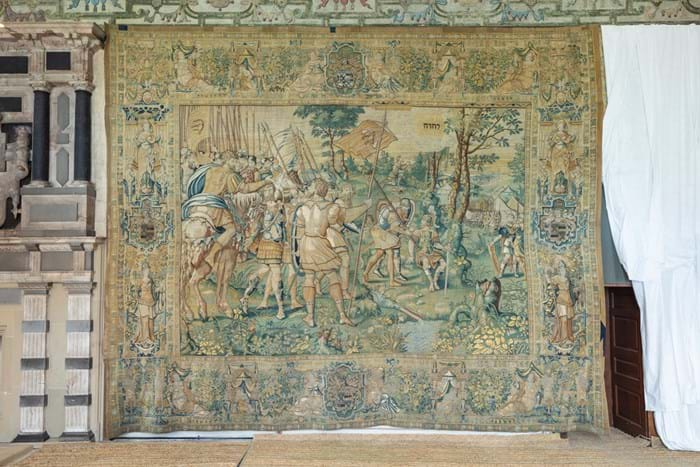
The 13th finished, and final, Gideon tapestry now returned to Hardwick Hall. Image: National Trust James Dobson.
Textile Conservator Yoko Hanegreefs added: “Our conservation work secures the future of the tapestries for at least 100 years.”
The conservation project was made possible over many years through funding from The David Webster Charitable Trust, the Wolfson Foundation, the Royal Oak Foundation, National Lottery Heritage Fund and other charitable trusts and foundations and individual donors.


